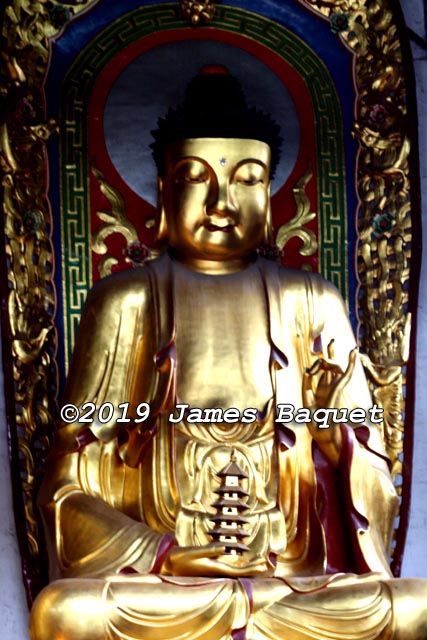(This article was written for, but never published in, the Shenzhen Daily.)
 |
| The Medicine Buddha at Nanhua Temple, Shaoguan, Guangdong |
In many temples, the Main Altar is graced by three Buddhas: the historic Shakyamuni Buddha in the center; the very popular Amitabha Buddha (Amito Fo) on the viewer's left; and the Medicine Buddha (Yaoshi Fo) on the right. Though certainly not as well known as the other two, this last has his own special cult of devotion.
Called Bhaisajyaguru in Sanskrit, meaning "Master of Healing," his origins are somewhat obscure, but they may lie in the purported physical healing aspects of the teachings of the original Buddha.
He has his own mantra--a brief phrase repeated over and over as a prayer--and there is a Medicine Buddha Sutra which dates back to before the 7th century CE. This states that, when he was yet a Bodhisattva, this Buddha made Twelve Vows for the benefit of all. These include "To heal beings born with deformities, illness or other physical sufferings" (#6), and, charmingly, "To help clothe those who are destitute and suffering from cold and mosquitoes" (#12).
Upon attaining Enlightenment, he became the Buddha of the Eastern Pure Land, and has two Bodhisattvas in attendance: one representing the sun (in Chinese, Riguang Bianzhao Pusa) and the other the moon (Yueguang Bianzhao Pusa).
He is commonly seen holding a pagoda, symbolizing the body of the historical Buddha (the pagoda was in fact a burial monument), and thus his power to heal the body. In some cases he may be holding a bowl such as those used by ancient apothecaries, and in still others, he is simply holding his hands in a mudra (sacred gesture).

No comments:
Post a Comment